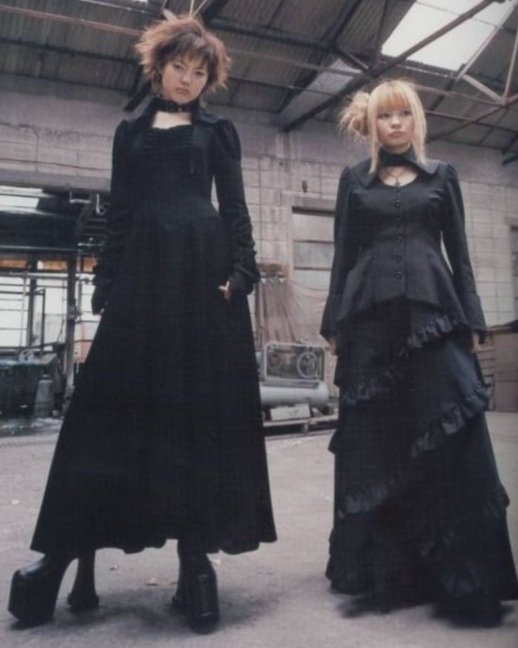FROM FRILLY TO FUTURISTIC: The Evolution of Japanese Goth
Jingubashi, Harajuku , Shibuya -ku , Tokyo ( 2007 )
Gothic style, much like the vivacious gyaru movement, stands as one of Japan's most iconic subcultures. As we delve nostalgically into its emergence during the late 90s, the world of J-goth unfolds as a pivotal facet of Harajuku culture. In stark contrast to the cutesy, kawaii trends that have reigned over Tokyo's fashion scene for the past three decades, Japanese Goth stakes its claim with an air of dark sophistication, embodying a defiance of the norm.
Rooted in the gothic rave wave that swept the UK in the 1970s, the Japanese iteration of Goth has metamorphosed into a strikingly distinctive subculture, predominantly revolving around fashion. Hidden beneath its underground origins, Japanese goth manages to rise above, catching the eye with its signature dark and elaborate aesthetic. It's a visual testament to the audacious spirit thriving beneath the surface of conformity.
Visual Kei
"Visual kei" is the embodiment of the Japanese interpretation of "gothic." The luminaries of visual kei, often intertwined with the post-class wave, echo the influences of the gothic bands that graced the punk era. This genre boasts extravagant costumes, audaciously flamboyant hairstyles, a plethora of makeup, androgynous visages, and an unmistakable aura of otherworldly theatricality.
The roots of Visual Kei sprawl in various directions, borrowing elements from iconic figures like David Bowie and KISS who left an indelible mark on Japanese music and fashion. Elements of hard rock, heavy metal, and punk coalesce within the pulsating heart of Visual Kei, serving as both inspiration and stepping stones for a novel subculture that's undeniably unique.
Goth Lolita
Stepping into the early-2000s, we're greeted by the emergence of the goth lolita style, a tantalizing fusion of fantastical garments reminiscent of Eurocentric cultures like Rococo and Victorian eras. This ethereal style, a Japanese Gothic trend exclusive in its essence, bloomed against a backdrop of Harajuku's commercialization.
However, the ascent of goth lolita faced its own trials, as the commercial saturation of Harajuku left its vendors struggling to sustain the enchanting couture they once peddled with pride. As this scene waned in the face of rampant consumerism, the enigmatic subculture found solace in corners less touched by the commodification of style.
Cyber Goth
This subculture reinvents gothic motifs through a high-tech lens, marrying the darkness with a sleek, almost space-age allure. Distinctive tribal tattoos take on a cybernetic twist, blurring the lines between human and machine in a visually arresting dance of innovation.
As fashion trends illuminate the ever-changing face of Harajuku, Japanese Goth stands as a timeless allure, a place where frilly meets futuristic, darkness dances with tradition, and the spirit of innovation harmonizes with the echoes of history.




